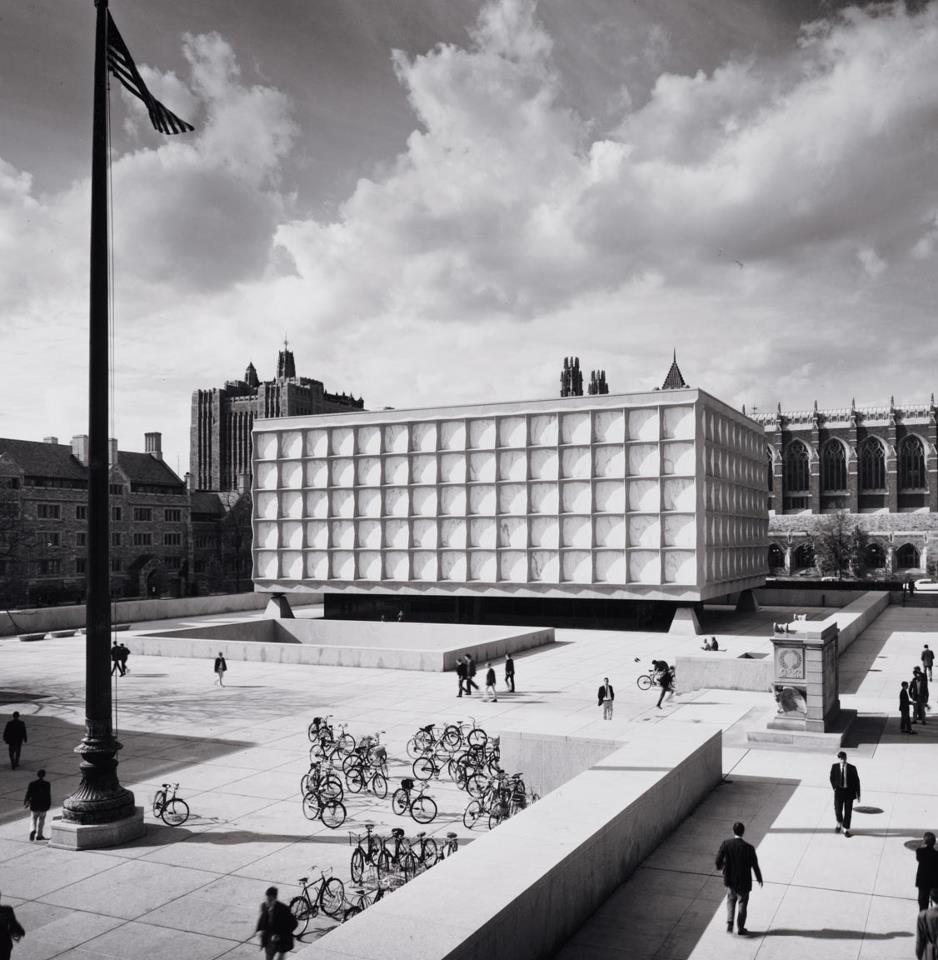From Heinrich Schütz to Henry Miller: Selections from the Frederick R. Koch Collection at the Beinecke Library

A library such as the Beinecke owes much of its character and excellence to private collectors—men and women who cut unique swaths through the field of historical artifacts and then place what they have garnered in libraries and museums for the benefit of a wider public. The exhibition opening at the Beinecke Library on April 20 is a case in point. From Heinrich Schütz to Henry Miller , which will be on view until July 14, offers a broad selection of manuscripts, scores, books, art, and photographs from the Frederick R. Koch Collection.
Mr. Koch received a Master of Fine Arts degree from the Yale Drama School in 1961, and his collection, assembled chiefly in the 1980s, reflects his high personal interest in literature, music, and the visual arts. While he has gathered literary treasures as diverse as the manuscript of A. A. Milne’s first poetry collection ( When we were very young, 1924 ) and the heavily corrected working typescript of Henry Miller’s Tropic of Cancer (both on display), the principal emphasis of his collecting has been music, with works of the nineteenth and twentieth centuries predominating.
Among the items on display are manuscript scores in the hands of Pergolesi, Boccherini, Mozart, Berlioz, Schubert, Liszt, Gounod, Chopin, Fauré, Ravel, and Stravinsky. The exhibition includes a recently discovered score of The Tales of Hoffmann which has radically altered previously held assumptions about the composition history of Jacques Offenbach’s posthumous masterpiece. The full-score holograph manuscript, written around 1879 or 1880, served as the basis of a new edition of the opera, which was first heard in its entirely at the Hamburg State Opera in 1999.
Another high point of the collection and the exhibition is the complete piano-vocal draft of Pelléas et Mélisande , the single most important manuscript of Debussy’s opera. While Debussy completed the work in 1895, the manuscripts shows that he continued to modify and correct it until 1901. His emendations, in black, green, red, and blue pencil, and in blue and red ink, allow scholars to trace the composition of the opera over a period of almost eight years. Debussy apparently used this manuscript to give previews of the opera to friends and fellow composers during this period. Around 1910 he sold the manuscript to a board member at the New England Conservatory of Music, where it resided until 1982, when it was sold again, at auction in New York.
Given Mr. Koch’s training in the theater arts, it is not surprising that his collection contains much material relating to opera and other collaborations between authors and composers. The Beinecke exhibition, for instance, includes a cantata (1819) by Rossini in honor of Emperor Francis I of Austria; Francesco Maria Piave’s libretto to Verdi’s Ernani , completely in the composer’s hand (1843); the manuscript of Richard Wagner’s poem Siegfrieds Tod (1848), the precursor of Götterdämmerung ; the manuscript of Hugo von Hofmannsthal’s play Elektra (1903), which became the basis of Richard Strauss’s opera of the same name; and the full score of William Walton’s Troilus and Cressida , an opera commissioned by the BBC in 1947. Several song scores will be exhibited, including Henri Duparc’s setting (1894) of Baudelaire’s poem “L’invitation au voyage” and Hugo Wolf’s setting (1897) of Goethe’s poem “Beherzigung,” as well as songs by Schumann, Brahms, Sibelius, Elgar, and Richard Strauss.
A modernist collaboration of particular note is Erik Satie’s ballet Parade . The short score for piano four hands will be on display, a manuscript heavily annotated by Cocteau. Picasso designed the stage settings when the work was premiered by the Ballets russes in 1917. Cocteau is further represented in the exhibition by the holograph manuscript of his burlesque Les mariés de Tour Eiffel (1920), with music provided by several composers, including Satie, Poulenc, and Darius Milhaud.
Among the literary items in the display are rare first editions of Baudelaire’s Les épaves (1866, poems banned from Les fleurs du mal ) and Rimbaud’s Une saison en enfer (1873). Manuscripts in the exhibition include a poem by Verlaine, a letter by Henry James (in French) to the wife of Alphonse Daudet, and extensive drafts for Proust’s A l’ombre des jeunes filles en fleurs (the second part of A la recherche du temps perdu ), showing the novelist’s complex method of composition.
Vincent Giroud, curator of modern books and manuscripts at the Beinecke Library, prepared the exhibition From Heinrich Schütz to Henry Miller . In the preface to its catalog, Yale President Richard C. Levin writes “This exhibition, organized as part of the university’s tercentennial celebration, displays for a wider public some of the most important scores and manuscripts assembled by Frederick R. Koch, a selection that reflects the impressive range and diversity of this vast collection. With the exhibition and its catalog, the university wishes to express gratitude for one of the greatest collections to come to Yale since the year of its founding.”
An illustrated catalog of the exhibition will be available.